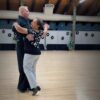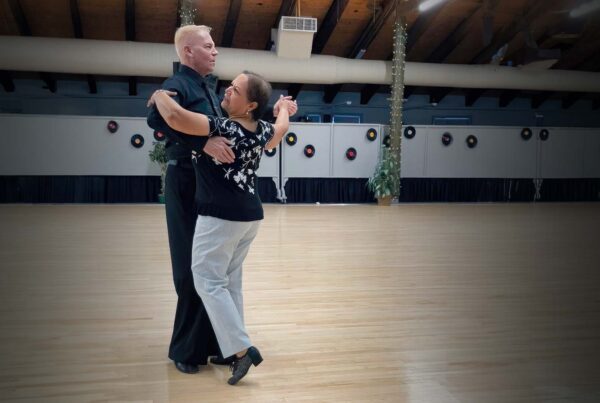A UK study in 1998 proved how powerful the mind is in terms of controlling the body’s actions. Participants were told under hypnosis that a pen was too heavy to lift. Equipment was attached to their muscles to measure muscular electrical activity. Although they were obviously capable of lifting the pen, when they tried doing so, their triceps and biceps acted in contradiction, making it physically impossible to lift the pen even though they were genuinely trying.
A 1972 issue of the Journal of Psychology describes another study where 24 participants had their arms strength-tested and then took part in an arm-wrestling competition. Before each match, researchers deceived both sides into believing that the weaker competitor was actually stronger. The result? In 10 of the 12 contests, the weaker person won.
Sports psychologists and motivational speakers like Anthony Robbins have, for decades, pointed out the power that the mind has over the body’s actions. If the mind is convinced of something negative, such as someone being better than you, the body will cooperate to make that belief come true.
The opposite is also true. Studies of gold-medal Olympic champions found that in every case, the winners had imagined themselves to be at the top of the podium. Most had gone so far as to actually create mental pictures of what it would feel like to stand there as their flag was raised and their national anthem played. It’s widely believed that self confidence happens as a result of winning, but research proves that this isn’t actually the case. Many of those who win top competitions have never won that event before. They simply believed they could.
In some dramatic cases, athletes who repeatedly made spectacular failed efforts broke through because they were so convinced that their bad luck had run out and the next attempt would be the winning one. These principles don’t mean you’ll automatically achieve your goal just by believing it. Many factors play a role. But it does mean that those who should reach their goal because they have the skills still might not. If their confidence isn’t high enough, their minds will actually work against them, causing muscles and other aspects of performance to suffer. This happens because the muscles respond to the brain’s messages in an effort to prove that the mind is being truthful. The result keeps success out of reach.
Confidence should never be confused with the physiological changes that the body experiences during physical effort, especially in a competitive setting. There’s a natural release of hormones such as epinephrine into the bloodstream any time you’re about to engage in competitive activity. You’ll experience increased heart rate as well, and all these factors can feel like nervous energy or tension. If you incorrectly interpret this as a negative response such as worry or anxiety, your confidence will suffer. But properly understood, you can actually use this to become more focused, as signs that your body is doing what it’s supposed to and preparing you to perform well.
One thing I observed having worked with typical dance competitors as well as television celebrities is that the self-confidence the celebrities have make them believe they cannot fail. They automatically dance better than most people simply because of this huge amount of confidence in their ability. That’s why many of the “stars” on Dancing with the Stars look so amazing. They are being taught in much the same way as any normal person would be taught to dance (of course, they are taught to dance a routine rather than typical dance skills, but that’s not relevant). Yet they learn faster and sell it more effectively because of their self-confidence.
Here are three steps you can take to develop your confidence as a dancer:
-
Dream big
It’s good to have goals that are well ahead of your current placing. Don’t sell yourself short. As the old saying goes, “If you reach for the stars you might not get one, but you won’t end up with a handful of mud.”
-
Break it down
Break a big goal into a number of smaller goals that are easy to achieve. You need to be able to feel that the smaller goal is within reach, so you can experience the success it brings. Well-known adjudicator Anya Klimova-Preston, in her seminar “The Checklist of Champions,” provides a long list of useful measurement criteria you can use to gauge your progress. A similar list is found in the book “Dance to Your Maximum.” If you’re a social dancer, you might set incremental goals like being able to get all the way around the floor without having to stop, or getting all the way through a song without repeating the same routine. If you’re a competitor there are many options, like deciding to achieve measurable improvement in just one or two areas for each upcoming competition. Or you might decide to increase your number of callbacks by 10% in the next comp. There are many ways you can set small, measurable goals that act as stepping stones towards the big one.
-
Set weekly and daily goals
Setting regular goals that you have to meet every day or week allow you to focus on each training session. You can set a goal of practicing at least five days a week, or so many hours each week. Or you can decide to achieve slightly better quality of some action in one small part of a routine. Research into Olympic champions found that they all shared a common trait of using small daily training goals. Since you spend far more time training than you do actually competing, these training goals are vitally important.
Working together, these weekly and daily goals, combined with the bite-sized competition goals and the focus of a big goal will help you achieve confidence. No matter what level you’re at, there will be something positive you can point to in order to recognize progress.













